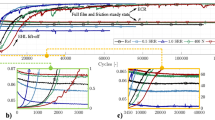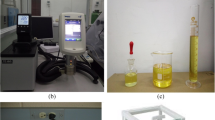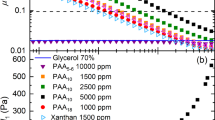Abstract
ON the basis of the hydrodynamic theory of lubrication presented by Prof. Osborne Reynolds in 18861, plane parallel surfaces in relative motion are incapable of developing a load-supporting oil film. This theory requires that the bearing surfaces be inclined to one another in the direction of motion. Recently, Mr. A. Fogg of the National Physical Laboratory reported2 load capacities for parallel thrust surfaces, operating at high speeds, that were comparable to those obtained with conventional Michell or Kingsbury type thrust bearings. Similar results have also been noted by other researchers3.
This is a preview of subscription content, access via your institution
Access options
Subscribe to this journal
Receive 51 print issues and online access
$199.00 per year
only $3.90 per issue
Buy this article
- Purchase on SpringerLink
- Instant access to full article PDF
Prices may be subject to local taxes which are calculated during checkout
Similar content being viewed by others
References
Reynolds, O., Phil. Trans. Roy. Soc., 177, 157 (1886).
Fogg, A., Engineering, 159, 138 (1945).
Newbigin, H. T., Proc. Inst. Civil Eng., 196, 223 (1914).
Kingsbury, A., Trans. Amer. Soc. Mech. Eng., 50, 6 (1928).
Kingsbury, A., Trans. Amer. Soc. Mech. Eng., 53, 59 (1931).
Author information
Authors and Affiliations
Rights and permissions
About this article
Cite this article
SHAW, M., STRANG, C. Role of Inertia in Hydrodynamic Lubrication. Nature 158, 452 (1946). https://doi.org/10.1038/158452a0
Issue date:
DOI: https://doi.org/10.1038/158452a0



